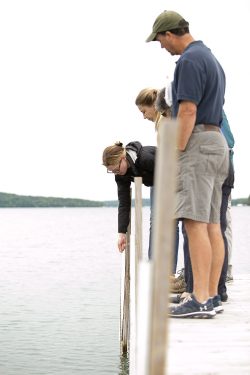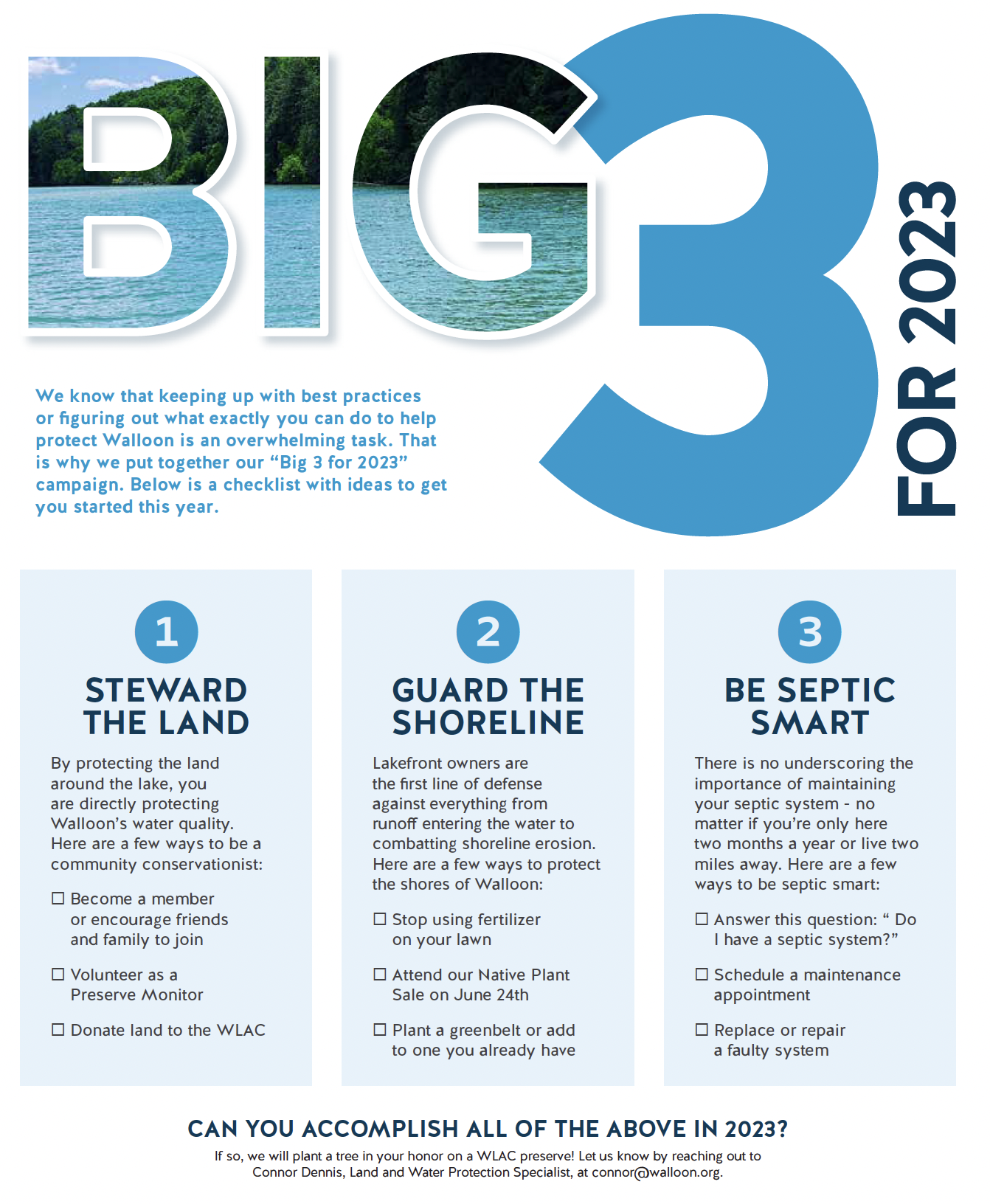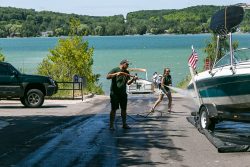We are dedicated to protecting the pristine water of Walloon Lake that we all know and love.
BELOW ARE A FEW OF OUR WATER INITIATIVES:
 WATER QUALITY MONITORING
WATER QUALITY MONITORING
In partnership and collaboration with Tip of the Mitt Watershed Council, we keep tabs on the biological and chemical components in Walloon Lake. Volunteers take weekly water quality measurements including temperature, pH, and clarity. We have been collecting these same measurements for decades and compare the data annually. This allows us to closely monitor any changes and mitigate their negative impacts.
AQUATIC INVASIVE SPECIES TREATMENT
A key part of our water protection is aquatic invasive surveying and treatment. By doing so, we prevent dangerous infestations which can quickly overtake the lake. Each year we contract specialists to locate and eradicate new or common invasive species. The funding for this important work is provided by our dedicated members.
BELOW IS WHAT YOU CAN DO:
BIG 3 FOR 2023
We know that keeping up with best practices or figuring out what exactly you can do to help protect Walloon is an overwhelming task. That is why we put together our “Big 3 for 2023” campaign. Below is a checklist with ideas to get you started this year:

 WASH YOUR BOAT
WASH YOUR BOAT
Make sure to wash or clean your boat(s) before launching them into the lake to prevent the transferring of water or plant materials from other locations into Walloon.
Last summer, we installed two new boat cleaning stations, one at Jones Landing and one at the Sumner Road Boat Launch. In addition to installing two more units in 2023, we will be hosting several boat washing days with Tip of the Mitt Watershed Council.
MAINTAIN YOUR SEPTIC SYSTEM
A typical septic system will last for 20-30 years but requires regular pump outs and maintenance. An unmonitored or failing system will leak septic into the lake. Please review this report on how to maintain your septic system for both your health and the health of the lake.
PLANT A GREENBELT
What is a greenbelt? An area of plants, such as native flowers, shrubs, and trees, planted between your lawn and the water. These natural shorelines protect the lake from detrimental runoff, including pesticides from lawn maintenance and drainage from driveways/roads.
As more land around the lake is cleared and developed, there are fewer opportunities for rainwater and other precipitation to be absorbed by the soil and filtered before entering the lake. To help, don’t mow to the water’s edge and plant a greenbelt to help improve water quality. For more information explore the resources below or contact Tip of the Mitt Watershed Council for advice:
Sensible Shoreline Development
Natural Shoreline for Inland Lakes
PREVENT SWIMMER’S ITCH
Swimmer’s Itch is caused by a parasite which lives in all northern Michigan lakes. The parasite cycles between snails in the water and ducks (often Mergansers or Canada geese). The characteristic rash lasts 3-5 days and is itchy and uncomfortable. There are a variety of creams and treatments available to ‘prevent’ swimmers itch, but none has proven effective for every case. Some lucky people are naturally resistant, and some may find one type of cream works well, while others continue to get Swimmer’s Itch.
To reduce your chances of swimmer’s itch:
- Establish a greenbelt of natural shoreline plantings to discourage ducks and geese from nesting on your property as Swimmer’s Itch is most prevalent where waterfowl congregate.
- Head to deeper water. Shallow, warmer water is more likely to bring you into contact with Swimmers Itch.
- Towel off or shower when coming out of the lake.
- Consider one of the swimmer’s itch ‘remedies’ available for purchase.
Please report cases of Swimmer’s Itch to our office by completing this form. We are tracking incidences and participating in scientific studies about the causes and possible prevention.

